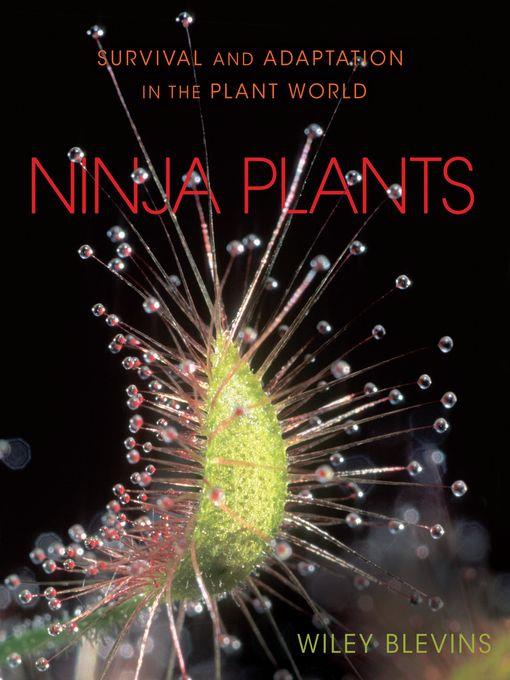
Ninja Plants
Survival and Adaptation in the Plant World
فرمت کتاب
ebook
تاریخ انتشار
2017
Lexile Score
1100
Reading Level
6-9
ATOS
7.6
Interest Level
4-8(MG)
نویسنده
Wiley Blevinsشابک
9781512439151
کتاب های مرتبط
- اطلاعات
- نقد و بررسی
- دیدگاه کاربران
نقد و بررسی

January 1, 2017
Gr 6-8-The catchy title is sure to attract readers. Seven chapters are filled with crystal clear photos and entries on several of the world's most unusual flora. The introduction discusses the role of insects in plant fertilization and the various methods plants use to achieve fertilization. The text goes on to cover the plants' appearances, their relationships to one another, how they reproduce, and the effects of parasites. Extensive use of scientific names adds to the book's authenticity, but there is no pronunciation guide provided. There is a glossary; however, many of the definitions are an almost word-for-word repetition of the main text. The conclusion, which briefly examines the relationship between plants and humans, comes as a bit of a surprise as the tone and focus of the work abruptly shift. The informational text becomes much more speculative and general. Blevins is critical of human overreliance on fossil fuels, the mass production of corn, and, to an extent, livestock farming ("we could feed more people by planting food crops than we could by raising animals on the same land."), but supporting data and sources are absent. The incongruous conclusion will likely need to be supplemented with additional readings. VERDICT Eye-catching, but a bit uneven. Consider only for collections in need of botanical materials.-Eldon Younce, Anthony Public Library, KS
Copyright 2017 School Library Journal, LLC Used with permission.

December 15, 2016
The plant world includes many curiosities whose "sneaky" adaptations help ensure their survival and reproduction. This slim introduction to botany offers an interesting and unusual invitation to young readers to look closely at the plant world. Chapter by chapter, Blevins describes plants whose smells repel, that eat insects, use stinging or poisonous defenses, imitate something else, or survive in extreme environmental conditions; plants that can move and even catch fire. The ninja comparison--"stealthy, fierce, and sometimes deadly"--is unevenly but perhaps too frequently made. It wears thin, but the variety and unexpectedness of Blevins' examples will keep readers' attention. The exposition is clear and broken up by well-captioned photographs and pullout sections describing further oddities (Mexican jumping beans, rainbow eucalyptus bark, the jabuticaba tree's crying fruit, parasitic figs), varieties of mimicry, thermogenesis, and more. An introduction covers the basics of plant evolution, survival, and reproduction, and the concluding chapter discusses plant-human relationships, including human causes for global climate change and its effect on the plant world. Specialized vocabulary is defined in context. Although the author includes new information on horizontal gene transfer, many of his examples are not plants but fungi, now said to belong to a separate kingdom. An interesting take on a subject not often covered in books for middle school and teen readers. (glossary, selected bibliography, further information, index) (Nonfiction. 12-17)
COPYRIGHT(2016) Kirkus Reviews, ALL RIGHTS RESERVED.

January 1, 2017
Grades 8-12 Some plants can live for a year without a direct source of water. Others can slowly strangle rival organisms. Still others can hurtle poisonous seeds for yards. This is a study in some of the most extreme adaptations seen in the plant kingdom. Topical chapters discuss camouflage, odoriferous defenses, structural anomalies, and how plants spread their seeds. Unfamiliar terms abound, but an extensive glossary is included in the back matter, along with a lengthy list of additional resources. Some species described can only be found deep in exotic jungles, but many others mentioned are ubiquitous house plants. A concluding chapter examines these amazing floral adaptations in terms of what they mean for humans, including how humans use these organisms as resources and, conversely, how plants impact human environments. The book offers solid proof that, in spite of their unobtrusive existence, plants can be ninjalike and are more sophisticated in survival than most people realize.(Reprinted with permission of Booklist, copyright 2017, American Library Association.)

























دیدگاه کاربران